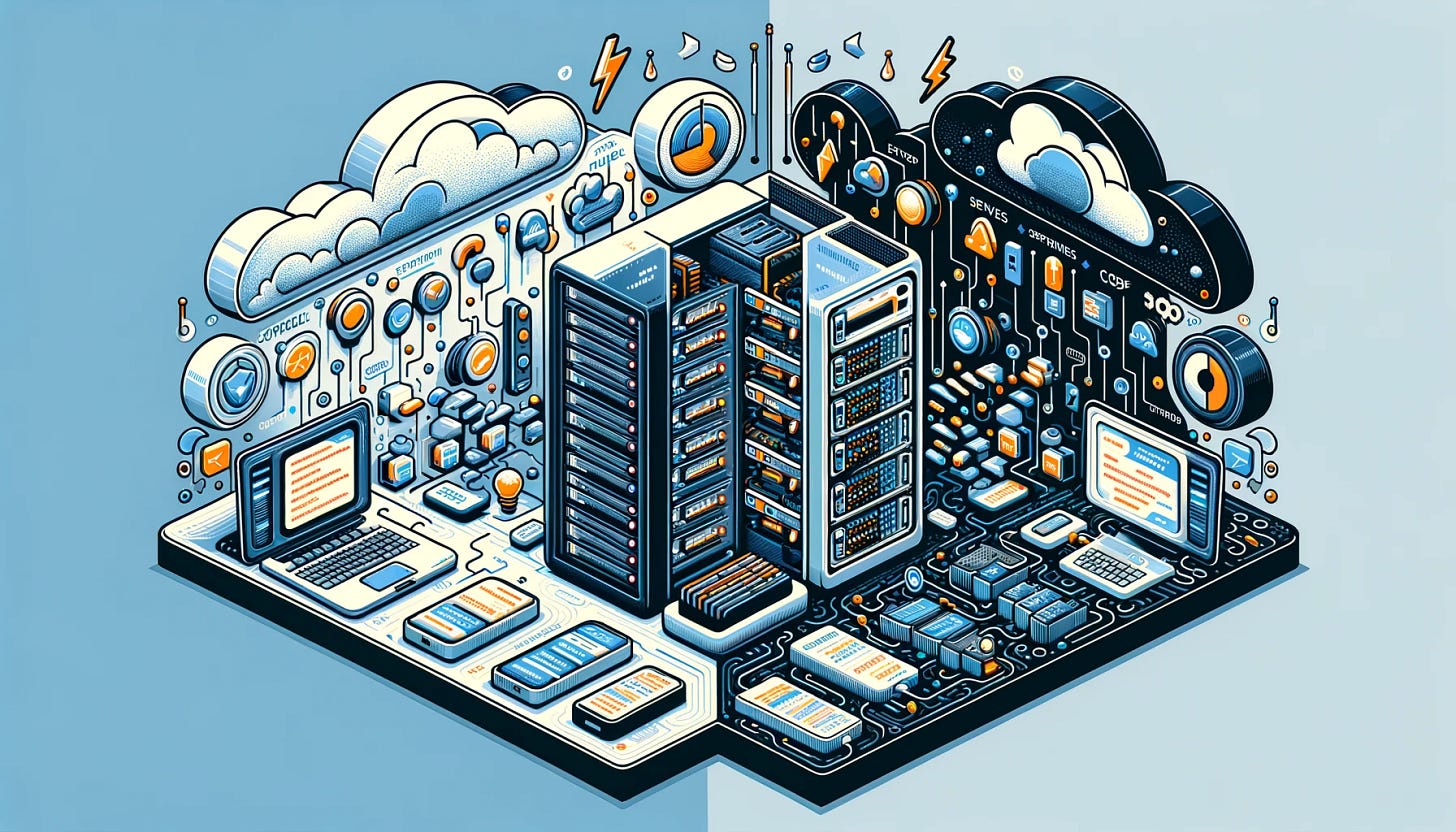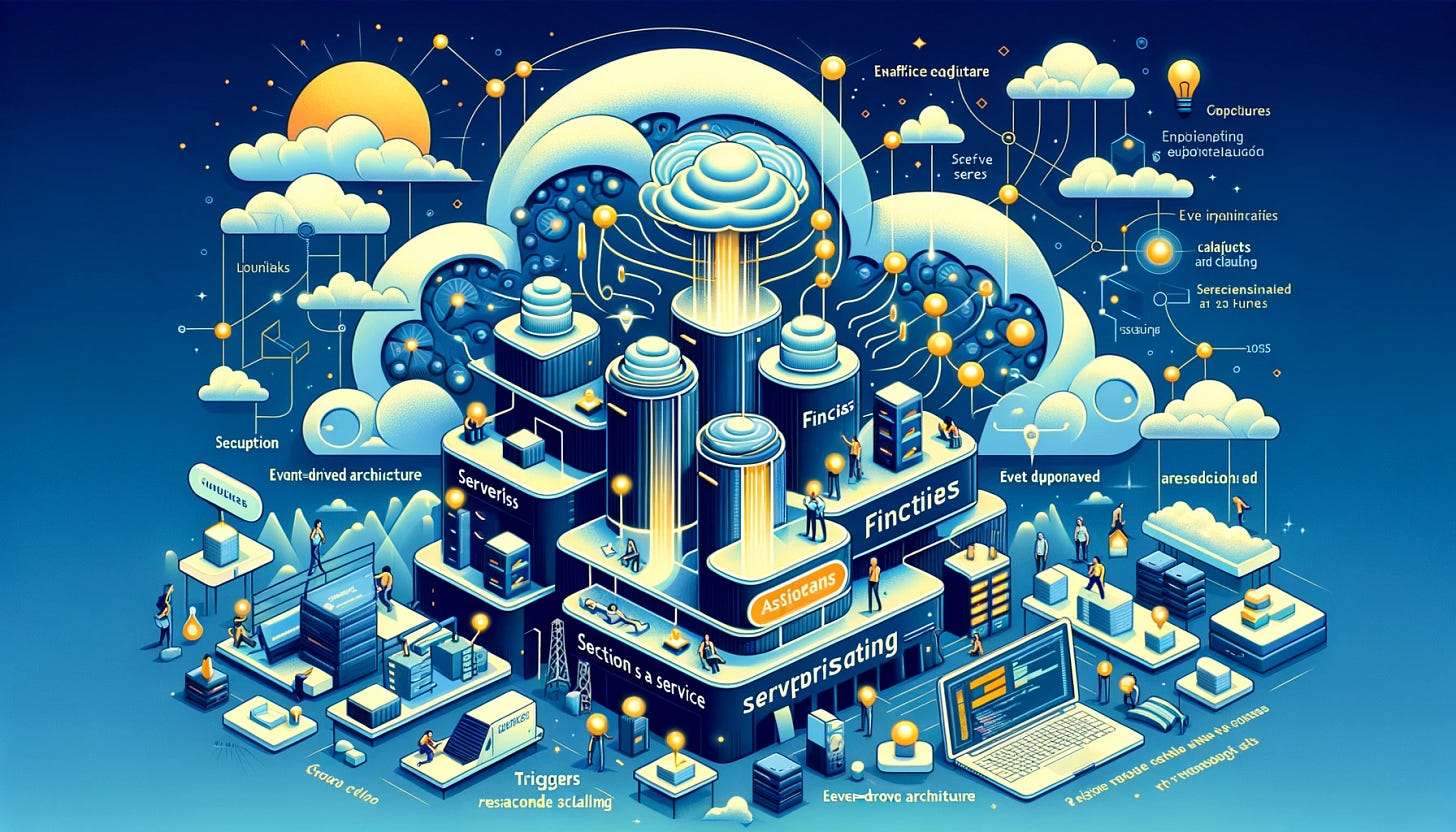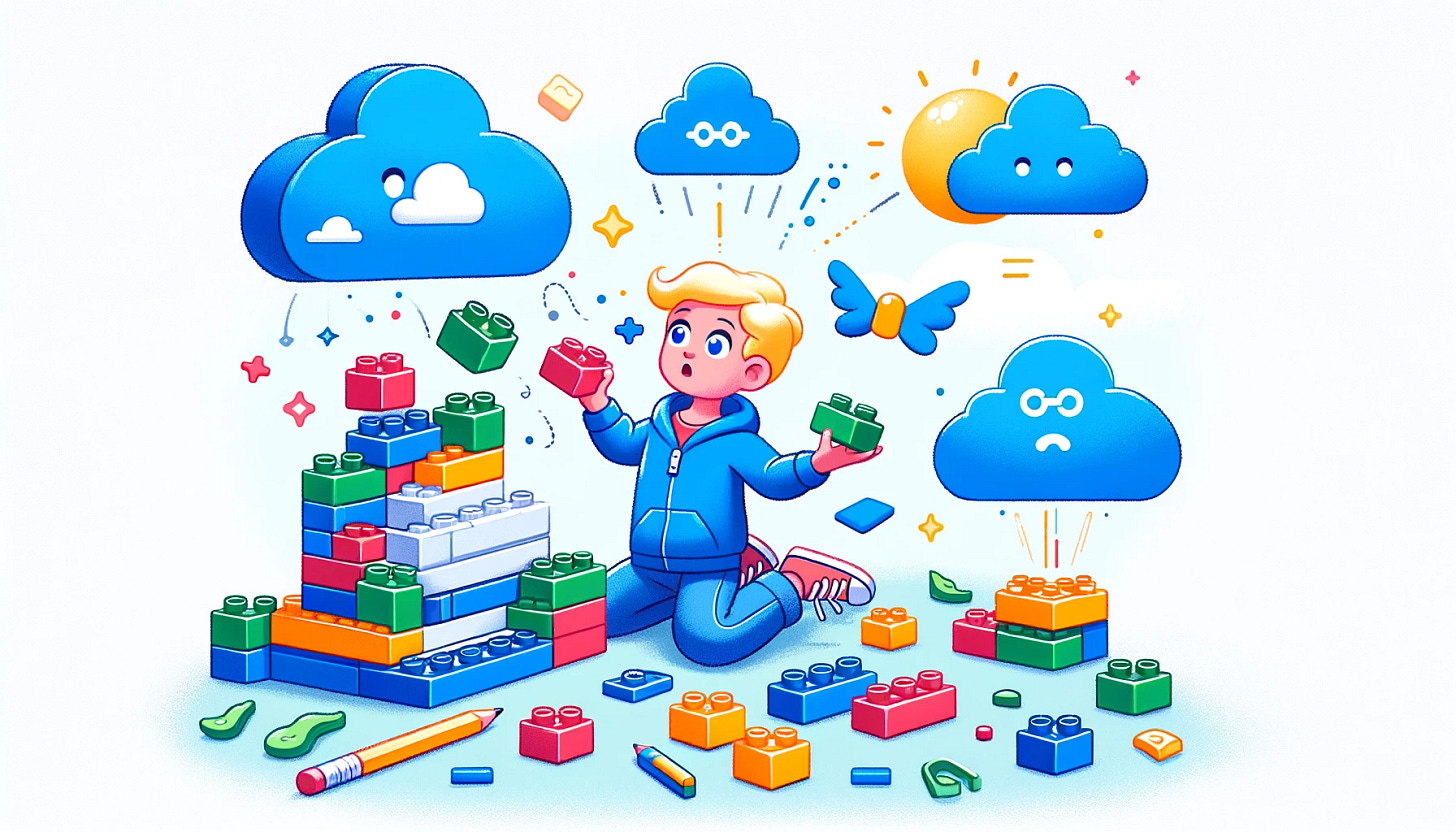Understanding Serverless Computing: The Invisible Infrastructure
Exploring How Serverless Computing is Revolutionizing the Tech Landscape
Introduction: The Shift to Serverless
In the bustling landscape of technology, a quiet revolution has been unfolding: the rise of serverless computing. This innovative approach to deploying applications is transforming the way developers think about infrastructure and code.
From Physical Servers to Serverless Architecture
Gone are the days when launching a digital service meant investing in heavy, costly server equipment. Imagine swapping out a cluttered garage full of tools for a sleek, on-demand workshop that appears only when you need to use it. That's the essence of serverless computing—it's there when you need it and out of sight when you don't.
Serverless: Not Without Servers, But Less of Your Concern
The term 'serverless' might be a bit misleading—it doesn't mean servers are no longer involved. Rather, it signifies a shift in responsibility. You no longer need to manage servers; instead, you simply provide your code, and the cloud provider runs it, manages the infrastructure, and scales it as needed.
A New Freedom for Developers
Serverless computing liberates developers from the shackles of server management, allowing them to focus purely on crafting code that serves business needs. It's a paradigm that prioritizes innovation and agility, enabling even the smallest teams to compete on a global stage without the burden of managing physical hardware or traditional virtual servers.
The Democratization of Technology
By removing the barrier of server management, serverless computing is democratizing technology. Startups and large enterprises alike can deploy ideas quickly, scale effortlessly, and pay only for what they use, turning capital-heavy tech investments into variable costs that grow with success.
In this post, we'll explore what serverless computing is, how it functions, its benefits, and its challenges. Join us as we decode the serverless movement and its significance in the evolving world of tech.
What is Serverless Computing?
Serverless computing is a cloud-computing execution model where the cloud provider dynamically manages the allocation and provisioning of servers. In simpler terms, it allows developers to build and run applications and services without thinking about the servers actually running the code.
Beyond the Name: It's About the Management, Not the Absence of Servers
Despite its name, serverless computing doesn't mean there are no servers involved. Instead, it's about abstracting the server layer away from the application development process. The servers are still there, but developers no longer need to be aware of them.
Conventional Hosting vs. Serverless
In traditional hosting models, whether it's on-premises servers or cloud-based virtual machines, there's a fixed amount of server resources that you manage based on your needs. You're responsible for server maintenance, scaling, updates, and capacity planning.
Serverless computing departs from this by automating these tasks. The cloud provider automatically adjusts computing resources as needed, scaling up or down instantly depending on the application's requirements. This means you're only billed for the resources your application actually uses, not for idle server space.
Event-Driven Architecture: Responding to Needs
Serverless architectures are often event-driven, meaning they respond to events and triggers such as HTTP requests, database changes, or queuing services. This makes serverless ideal for applications with irregular traffic patterns, as resources are used only when needed.
Focus Shift: From Infrastructure to Product
This model allows developers to focus solely on writing the code for their service or application. The time-consuming work of managing, provisioning, and maintaining servers is handled by the cloud provider, freeing developers to concentrate on innovation and the user experience.
Conclusion: The Serverless Advantage
Serverless computing represents a shift towards greater efficiency and developer empowerment. By offloading the responsibility of server management, it accelerates development cycles, optimizes resource usage, and can significantly reduce costs, all while ensuring applications are highly available and scalable.
How Serverless Computing Works
Serverless computing might seem like a complex web of technology, but at its core, it's a straightforward concept that's all about efficiency and scalability.
Function as a Service (FaaS): The Building Blocks
At the heart of serverless computing lies the concept of Function as a Service (FaaS). Imagine having a personal assistant who's always on standby, ready to perform tasks whenever you call. In serverless computing, these 'assistants' are functions — snippets of code designed to perform specific tasks. They spring into action when triggered by an event, such as a user request or a new file upload, and they're only 'awake' for the duration of the task, meaning you don't pay for idle time.
Event-Driven Architecture: The Pulse of Serverless
Serverless computing thrives on an event-driven architecture. This means that everything operates in response to events — data flows, user actions, or system state changes. It's like a reactive network where each function waits for its cue to perform, ensuring resources are optimized and nothing is wasted.
The Role of Cloud Providers: The Stage Managers
Cloud providers are the stage managers in the serverless world, taking care of the infrastructure, scaling, and execution of functions. Providers such as AWS, Microsoft Azure, and Google Cloud offer serverless platforms where you can deploy your code without worrying about the underlying servers. They manage the complexities of server provisioning, maintenance, and scaling, allowing your applications to automatically adapt to the demands of the workload.
Seamless Scalability: Growing on Demand
One of the most significant advantages of serverless computing is its ability to scale effortlessly. As your application's usage grows, the serverless platform seamlessly allocates more resources to handle the increase in demand. Conversely, it scales down during quieter periods, ensuring you're not overpaying for unused resources.
The Pay-as-You-Go Model: Cost-Effective and Flexible
Serverless computing is often associated with a pay-as-you-go pricing model. You only pay for the execution time and resources your functions use. This can lead to substantial cost savings, especially for applications with fluctuating or unpredictable workloads.
Conclusion: A Modern Approach to Application Deployment
Serverless computing represents a modern approach to application deployment, one that prioritizes flexibility, efficiency, and developer experience. By abstracting the servers and infrastructure, it allows developers to build and deploy applications that are inherently scalable and responsive to real-time demands.
The Benefits of Going Serverless
The serverless computing model is not just a technological trend; it's a strategic shift that offers a multitude of benefits to organizations and developers alike. Here's how going serverless can redefine the efficiency and agility of your operations.
Cost Savings: Pay for What You Use
Serverless computing introduces a cost-effective model where you pay only for the compute time you consume. This eliminates the need to pay for idle server capacity, reducing expenses significantly. It's like having a utility service where you're billed only for the water you use, not the water that stays in the pipes.
Scalability: Automatic and Effortless
Scalability is inherent in serverless architectures. Your applications can scale up to handle spikes in traffic automatically and then scale down during quieter periods without any manual intervention. This flexibility ensures that your application performs optimally at all times, much like an elastic band that adjusts to the amount of stretch needed.
Reduced Operational Complexity
Serverless computing offloads the responsibility of managing servers, updates, and scaling to the cloud provider. This reduces operational complexity, allowing teams to focus on developing and improving their applications rather than on infrastructure management. It’s akin to renting a fully serviced apartment where maintenance is someone else's responsibility, freeing you to live your life.
Faster Time-to-Market
With serverless, the infrastructure is already in place, so you can deploy applications and updates faster. This rapid deployment capability allows organizations to innovate and respond to market demands quickly, much like a fast-food chain that can quickly add a new item to the menu to capitalize on trends.
Enhanced Productivity
Developers can devote more time to writing code that adds value to the business instead of managing servers. This shift in focus promotes productivity and innovation, as the developers can concentrate on creating and deploying features that enhance user experiences.
Eco-Friendly Computing
By utilizing server resources only when needed, serverless computing can be more environmentally friendly than traditional models. It optimizes the use of computational power, reducing the energy footprint of running underutilized servers.
Conclusion: A Step Towards a More Agile Future
The benefits of serverless computing paint a picture of a future where agility, efficiency, and innovation are paramount. It's a model that aligns with the fast-paced, dynamic nature of today's digital landscape, providing a framework for businesses to thrive without the burden of traditional infrastructure constraints.
Explained to a Kid: What is Serverless Computing?
Imagine you're building a LEGO castle. Every time you want to add a tower or a gate, you snap on LEGO pieces exactly where you need them. And when you're done playing, those pieces magically disappear, so you don't have to clean up. Serverless computing is kind of like that, but for computer programs on the internet.
Magical Computers in the Cloud
Instead of building with LEGOs, developers create apps and websites. In the old days, they had to buy or rent special computers called servers to run these apps, kind of like needing a big box to store your LEGO castle in. But with serverless computing, they don't need their own box. Instead, they use magical computers in the cloud that appear whenever their app needs to do something, like send a message or show a video.
Only There When You Need Them
These magical cloud computers are special because they only show up when someone is using the app, just like your LEGO pieces only appear when you're building. After the app does what it needs to, the cloud computers disappear, just like your LEGO pieces, so there's no mess to clean up.
Why It's Cool
This is really cool for people who make apps because they don't have to worry about their LEGO box being too small (running out of computer space) or too big (wasting money on extra space they don't use). They can focus on making the best castle (or app) they can, knowing the right LEGO pieces will always be there when they need them, and they only pay for the pieces they use.
Conclusion: Making Computer Stuff Easier
So, serverless computing helps people who make websites and apps by letting them build cool things without worrying about the computers running them. It's like having an endless supply of LEGO pieces that you don't have to clean up, making it easier and more fun to build amazing stuff!
Conclusion: Why Serverless Matters
As we've journeyed through the world of serverless computing, from its definitions to its inner workings, benefits, and even how to explain it to a kid, it's clear that serverless computing is more than just a trend. It's a transformative force in the tech industry, simplifying how we develop, deploy, and manage applications.
A Future Powered by Serverless
Serverless computing points us toward a future where efficiency, flexibility, and innovation are not just goals but realities. By removing the burden of server management, developers can focus on creating solutions that truly matter, without the overhead of traditional infrastructure.
Democratizing Technology
Serverless computing democratizes technology, making powerful computing resources accessible to anyone with an idea. Whether you're a solo developer or part of a large team, serverless levels the playing field, allowing for the rapid realization of ideas.
Sustainability and Scalability
Moreover, serverless computing embraces sustainability and scalability. It ensures resources are used optimally, reducing waste and enabling applications to scale seamlessly with demand. This efficiency is not just good for businesses—it's beneficial for the environment too.
Embracing Serverless
As we move forward, embracing serverless computing will be key for organizations looking to stay competitive and innovative. It offers a pathway to building more resilient, responsive, and cost-effective applications and services.
Conclusion: A Call to Innovate
Serverless computing is more than just a way to build applications—it's a call to innovate, to think differently about what we build and how we build it. It encourages us to imagine a world where our ideas can take flight without the constraints of traditional computing models.
Please consider showing your support by sharing this post with your friends and colleagues.







